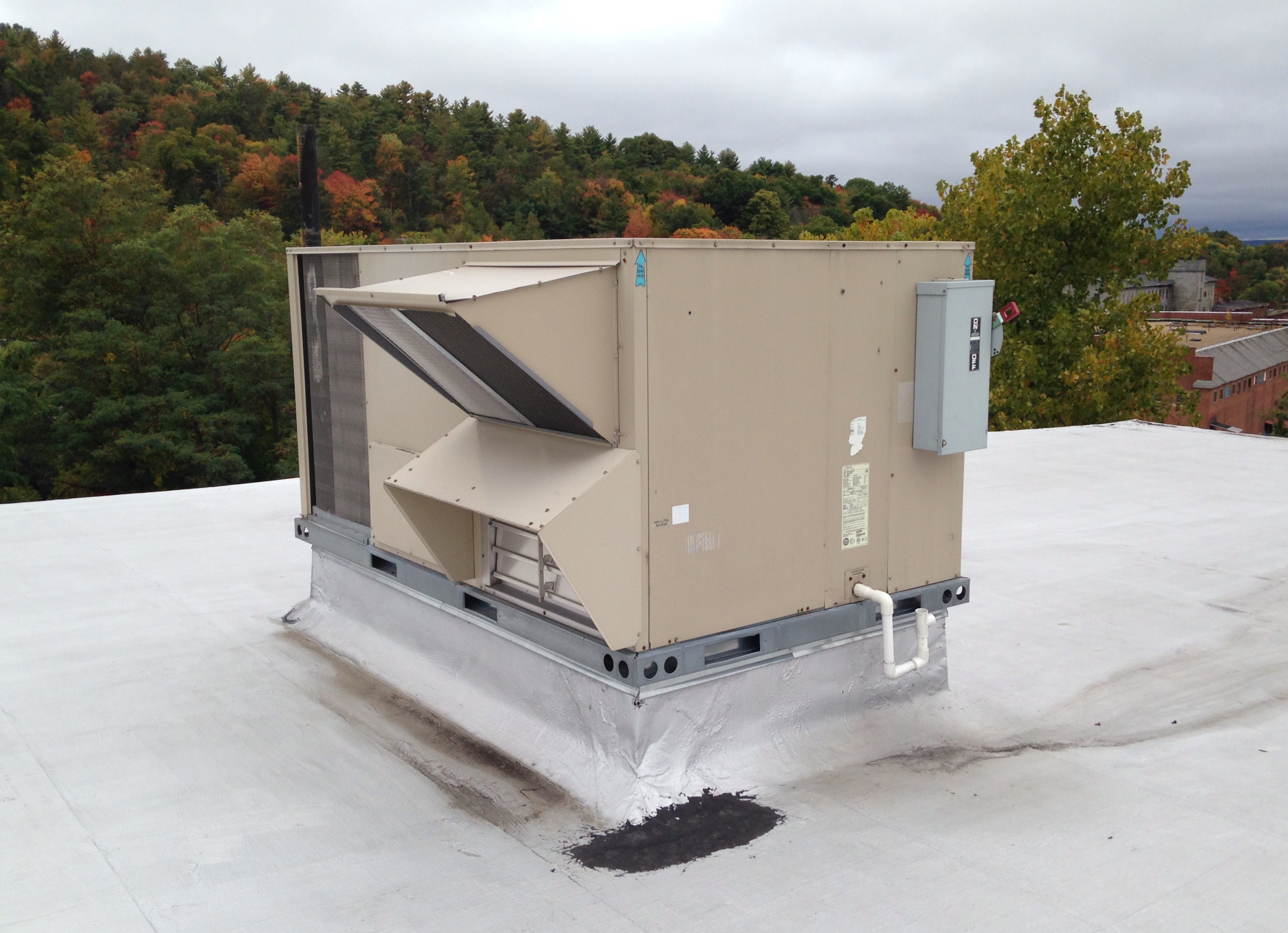Rooftop units (RTUs) are the most common type of HVAC system in commercial buildings, “cooling nearly 60% of the U.S. commercial building floor area and consuming 4.3 quads of energy annually.” RTUs represent a significant capital investment and have an average lifespan and depreciation period of about 15 years. Many commercial building RTUs still in operation are reaching, have met, or have exceeded their average lifespan. RTU technology that is more than a decade old is, unsurprisingly, very inefficient and could be wasting anywhere from “$900 to $3,700 per unit annually, depending on the building size and type.” In fact, “The highest performing RTUs on the market are up to 50% more efficient than RTUs available 10 years ago.” Facility managers have few solutions when dealing with old, energy-hogging RTUs: either install energy efficient components, or replace the unit. The following will examine RTU energy efficiency and how to capitalize on utility incentives.
When Replacement Isn’t the Answer
The cost to replace an RTU can cost approximately $1,200 per ton, or $3,000 per square foot. The average RTU has a cooling capacity of approximately 5.3 tons (although this is on the small side for mid- and large-sized businesses), and many commercial and industrial operations require more than one unit. Facility managers often neglect to replace a unit, even after it has met or exceeded its service life, choosing to replace or repair the equipment when it fails. This “run to fail” model can be very costly, as repairs and maintenance expenses build up over time. When replacement isn’t the answer, there are other cost-effective RTU energy efficiency solutions, including variable frequency drives, demand controlled ventilation, and economizers.
Variable Frequency Drives
RTUs can be retrofitted with variable frequency drives (VFDs), controls that vary the speed of a motor based on system feedback to use only the amount of power necessary to eliminate wasted energy and costs. According to affinity laws, if the speed of the motor is reduced by 15%, for example, the motor horsepower will, in turn, be reduced by 45-50%.
Demand Controlled Ventilation
Demand controlled ventilation (DCV) systems adjust the amount of fresh air ventilated into a space, based on the number of occupants. The RTU will heat or cool fresh air (depending on the season) that is brought into a building to maintain comfort conditions. Recirculated air from the occupied space that has already been conditioned requires less energy to bring to setpoint than fresh air. Conditioning more air than needed is an unnecessary waste of energy. Installing DCV systems can reduce RTU energy consumption between 30-50% annually.
VFD and DCV systems are more efficient when combined. When a DCV system calls for less air to be circulated through an occupied space, for example, the VFD will slow down the motor to deliver an appropriate amount.
Economizers
An economizer’s role is to detect both the inside and outside air temperatures. During the cooling season, for example, if the outside air temperature is cooler than the inside air, the economizer will turn off the compressor and utilize the outside air. Installing economizers can reduce RTU energy costs by up to 30% annually.
Capitalizing on Utility Incentives
When considering capital investments, successful businesses balance up-front costs and long-term savings. Replacement RTU systems or upgrades to mechanical components will improve the energy efficiency of the unit, and in turn, the long-term savings. Utility incentives sweeten the deal, further mitigating up-front costs. Utility incentives differ state by state. The best way to maximize the utility incentives on your capital project is to speak to an energy services company (ESCO) that has a relationship with your local utility company.
Bottom Line
RTUs condition approximately 60 percent of the commercial space in the United States, and many units are nearing or have exceeded their life expectancy. Replacing an aging, inefficient unit is not an option for most organizations, due to high up-front costs. RTU energy efficiency, including variable frequency drives, demand controlled ventilation, and economizers, are alternative solutions when replacing the unit is not an option. These simple, cost-effective retrofits, which can often be combined with utility incentives, can significantly reduce the operational expenses of each RTU unit.




